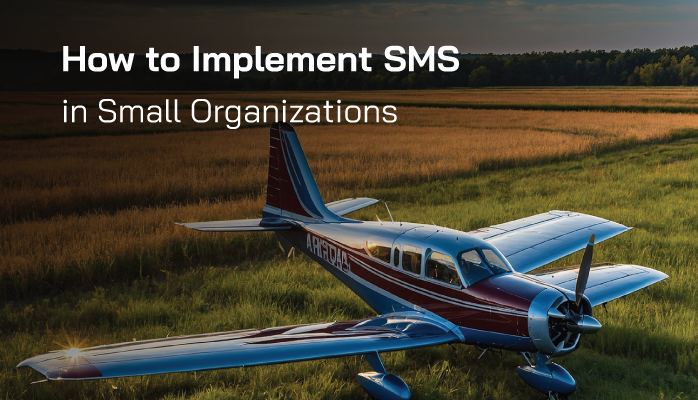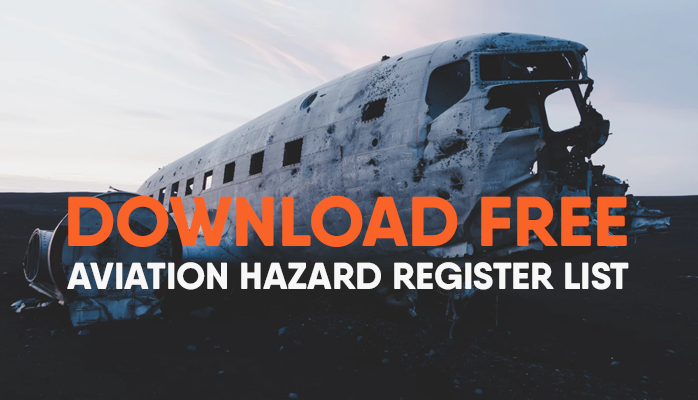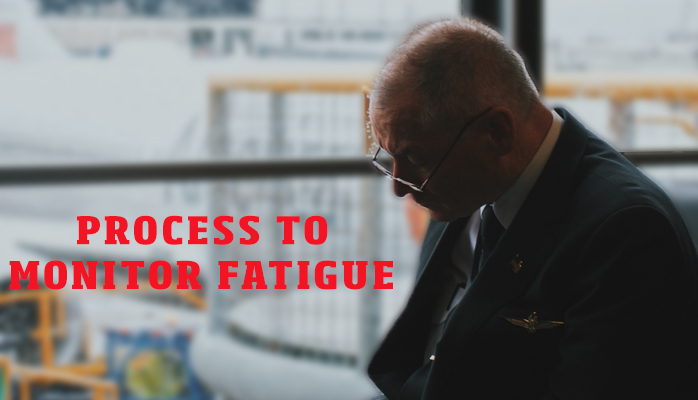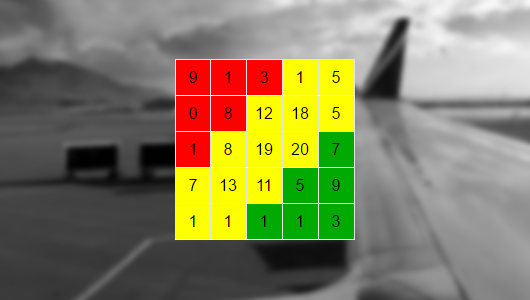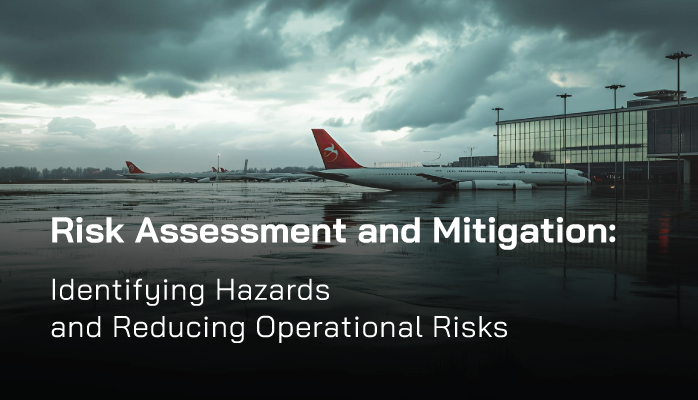Stu Martin
Stu Martin is an accomplished aerospace safety engineer with over 25 years of experience in the aviation industry. Beginning his career on the ramp, Stu developed a hands-on understanding of aircraft operations, maintenance, and safety protocols. His journey from ground operations to engineering has equipped him with a unique perspective on aviation safety, blending practical expertise with technical rigor. Stu has contributed to numerous safety initiatives, including the development of risk assessment frameworks and incident investigation protocols, earning recognition for his commitment to enhancing operational safety. A respected voice in the field, he continues to advocate for robust safety cultures within aviation organizations worldwide.
SMS Software Cost vs. Value Analysis
For small fixed-base operators (FBOs), charter operators, UAS, MROs, and airports, managing safety has become a non-negotiable priority. With increasing regulatory demands from the Federal Aviation Administration (FAA) and the International Civil Aviation Organization (ICAO), Safety Management Systems (SMS) are no longer optional—they’re essential. But for small operators with limited budgets and lean teams, the question remains: Is investing in SMS software for small aviation operators worth it compared to sticking with manual processes?
Read More
Topics:
Aviation SMS Implementation,
Aviation SMS Database,
Risk Management Software,
Risk Management Training
In the fast-paced, ever-changing world of aviation, a robust safety culture is the backbone of operational excellence. For new safety managers tasked with preparing for Safety Management System (SMS) audits, one of the most daunting challenges is training accountable executives to champion safety culture.
These leaders, often focused on operational and financial priorities, may not immediately grasp the nuances of SMS or their role in fostering a proactive safety mindset. Yet, their buy-in is critical to embedding safety as a core organizational value.
Read More
Topics:
4-Safety Promotion,
3-Safety Assurance,
1-Safety Policy,
FAA Compliance,
Safety Culture
In the high-stakes world of aviation, a robust Safety Management System (SMS) is the backbone of risk management. For aviation safety managers and accountable executives—senior leaders responsible for SMS oversight—managing hazards effectively is critical to preventing incidents and ensuring compliance with standards set by the International Civil Aviation Organization (ICAO) and national civil aviation authorities like the FAA or EASA.
A Hazard Register is a key tool in this process, serving as a centralized record of identified hazards, their risks, and mitigation measures within an aviation SMS.
Read More
Topics:
2-Safety Risk Management,
Risk Management Training
Introduction: The Fatigue Challenge in Utility Aviation
Utility aviation, encompassing power line inspections, wildfire patrols, and infrastructure surveys, relies on helicopters and drones operating in high-risk, low-altitude environments. Pilot fatigue is a critical concern, with the Federal Aviation Administration attributing 70% of utility aviation incidents to human factors, costing millions annually, per the International Air Transport Association. Fatigue impairs decision-making, reaction times, and situational awareness, posing risks during complex missions.
Read More
Topics:
Aviation SMS Database,
3-Safety Assurance,
Risk Management Software,
2-Safety Risk Management,
Risk Management Training
Safety Survey Benefits Run Deep
Surveys seem a bit old-fashioned. That’s probably because they are.
Surveys have been around and popular for years. Safety surveys have many uses besides getting the opinions of the workforce. Surveys are also useful for
- Promoting the aviation safety management system (SMS);
- Teaching employees about processes or procedures;
- Confirming management's suspicions about employee behaviors.
Read More
Topics:
4-Safety Promotion
Create Aviation SMS Manuals
Creating an aviation Safety Management System (SMS) manual is a critical task for safety managers, consultants, and accountable executives striving to meet International Civil Aviation Organization (ICAO), Federal Aviation Administration (FAA), or European Union Aviation Safety Agency (EASA) standards.
A well-crafted SMS manual not only ensures regulatory compliance but also fosters a proactive safety culture, reducing risks across operations. For small operators like flight schools or large airlines, the process can seem daunting, often taking 6–12 months without proper tools.
Read More
Topics:
Aviation SMS Implementation,
1-Safety Policy
In the high-stakes world of aviation, where safety is paramount, a robust Safety Management System (SMS) is essential for identifying and mitigating risks to prevent incidents. For aviation safety managers and accountable executives—senior leaders responsible for SMS oversight—prioritizing mitigation efforts efficiently is a critical challenge. The risk matrix, a cornerstone tool in aviation safety risk management, provides a structured method to assess and prioritize risks based on their severity and likelihood. By enabling data-driven decisions, the risk matrix ensures resources are allocated effectively to address the most critical hazards.
Read More
Topics:
3-Safety Assurance,
2-Safety Risk Management,
Risk Management Training
A Guide for Aviation Safety Professionals
Unmanned Aircraft Systems (UAS) are transforming aviation, from aerial inspections to emergency response. Yet, their integration into airspace demands rigorous safety management.
Read More
Topics:
Aviation SMS Database,
3-Safety Assurance,
Risk Management Software,
2-Safety Risk Management
For new aviation safety managers, managing pilot fatigue is critical to maintaining a robust Aviation Safety Management System (SMS) and ensuring compliance with FAA, EASA, and ICAO regulations. Fatigue impairs pilot alertness, increasing the risk of errors that can compromise safety.
This comprehensive guide explains why, how, and when to perform Pilot Fatigue Assessment, with a focus on the Fatigue Risk Management System (FRMS) and practical tools like the Karolinska Sleepiness Scale (KSS). Real-world examples and actionable steps will help you proactively manage fatigue and strengthen your SMS.
Read More
Topics:
4-Safety Promotion,
3-Safety Assurance,
2-Safety Risk Management
An Aviation Safety Manager Interview
The role of an aviation safety manager is critical in ensuring the safety of aircraft operations, people on the ground, passengers, and crew.
These professionals oversee the
- development and maintenance of Safety Management Systems (SMS),
- ensure compliance with international and national regulations, and
- foster a culture of safety within their organizations.
Preparing for an interview for this position requires a deep understanding of the role, its requirements, and the ability to articulate your expertise effectively.
Read More
Topics:
1-Safety Policy,
Risk Management Training

